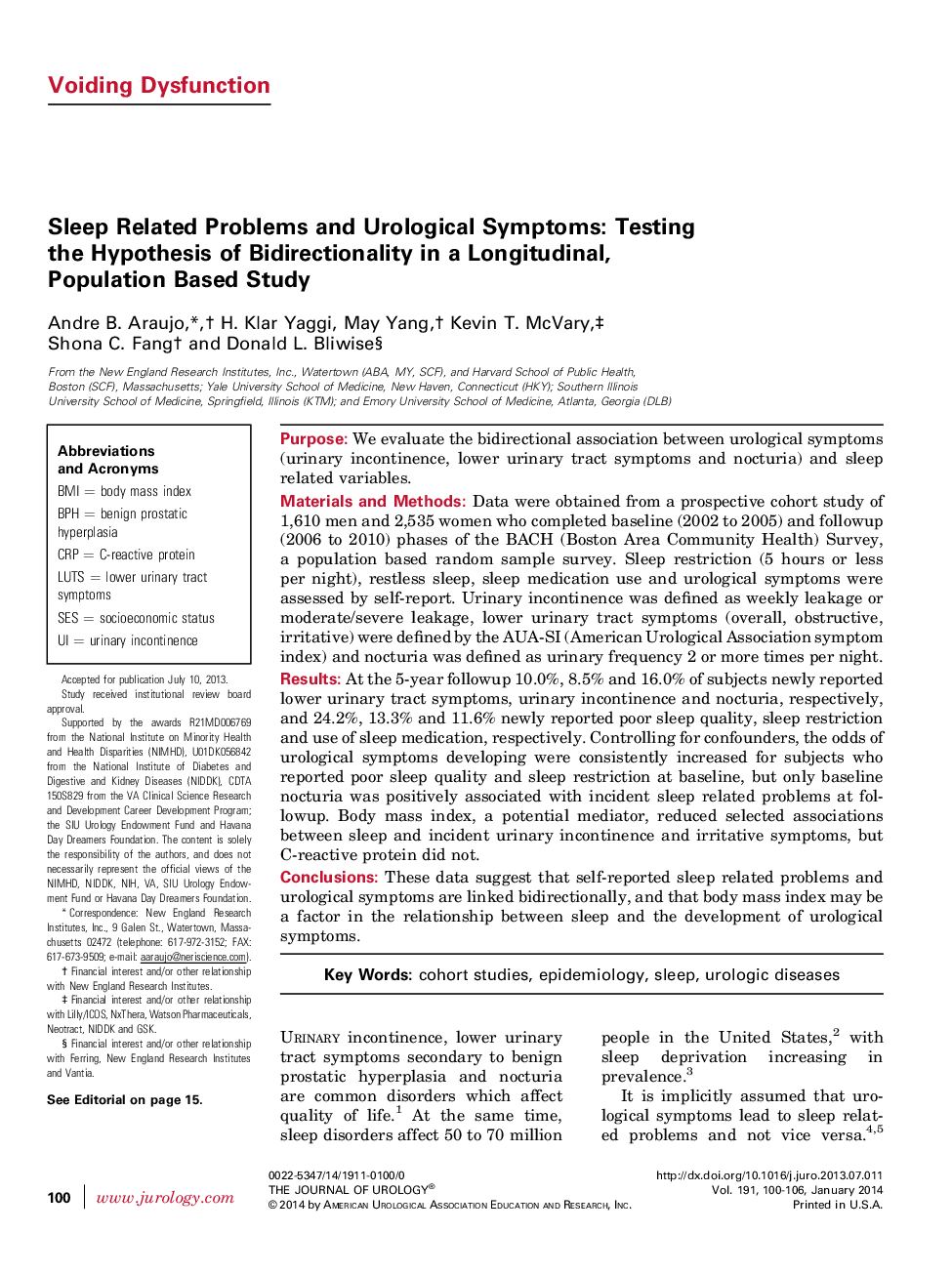| کد مقاله | کد نشریه | سال انتشار | مقاله انگلیسی | نسخه تمام متن |
|---|---|---|---|---|
| 3863552 | 1598910 | 2014 | 7 صفحه PDF | دانلود رایگان |
PurposeWe evaluate the bidirectional association between urological symptoms (urinary incontinence, lower urinary tract symptoms and nocturia) and sleep related variables.Materials and MethodsData were obtained from a prospective cohort study of 1,610 men and 2,535 women who completed baseline (2002 to 2005) and followup (2006 to 2010) phases of the BACH (Boston Area Community Health) Survey, a population based random sample survey. Sleep restriction (5 hours or less per night), restless sleep, sleep medication use and urological symptoms were assessed by self-report. Urinary incontinence was defined as weekly leakage or moderate/severe leakage, lower urinary tract symptoms (overall, obstructive, irritative) were defined by the AUA-SI (American Urological Association symptom index) and nocturia was defined as urinary frequency 2 or more times per night.ResultsAt the 5-year followup 10.0%, 8.5% and 16.0% of subjects newly reported lower urinary tract symptoms, urinary incontinence and nocturia, respectively, and 24.2%, 13.3% and 11.6% newly reported poor sleep quality, sleep restriction and use of sleep medication, respectively. Controlling for confounders, the odds of urological symptoms developing were consistently increased for subjects who reported poor sleep quality and sleep restriction at baseline, but only baseline nocturia was positively associated with incident sleep related problems at followup. Body mass index, a potential mediator, reduced selected associations between sleep and incident urinary incontinence and irritative symptoms, but C-reactive protein did not.ConclusionsThese data suggest that self-reported sleep related problems and urological symptoms are linked bidirectionally, and that body mass index may be a factor in the relationship between sleep and the development of urological symptoms.
Journal: The Journal of Urology - Volume 191, Issue 1, January 2014, Pages 100–106
